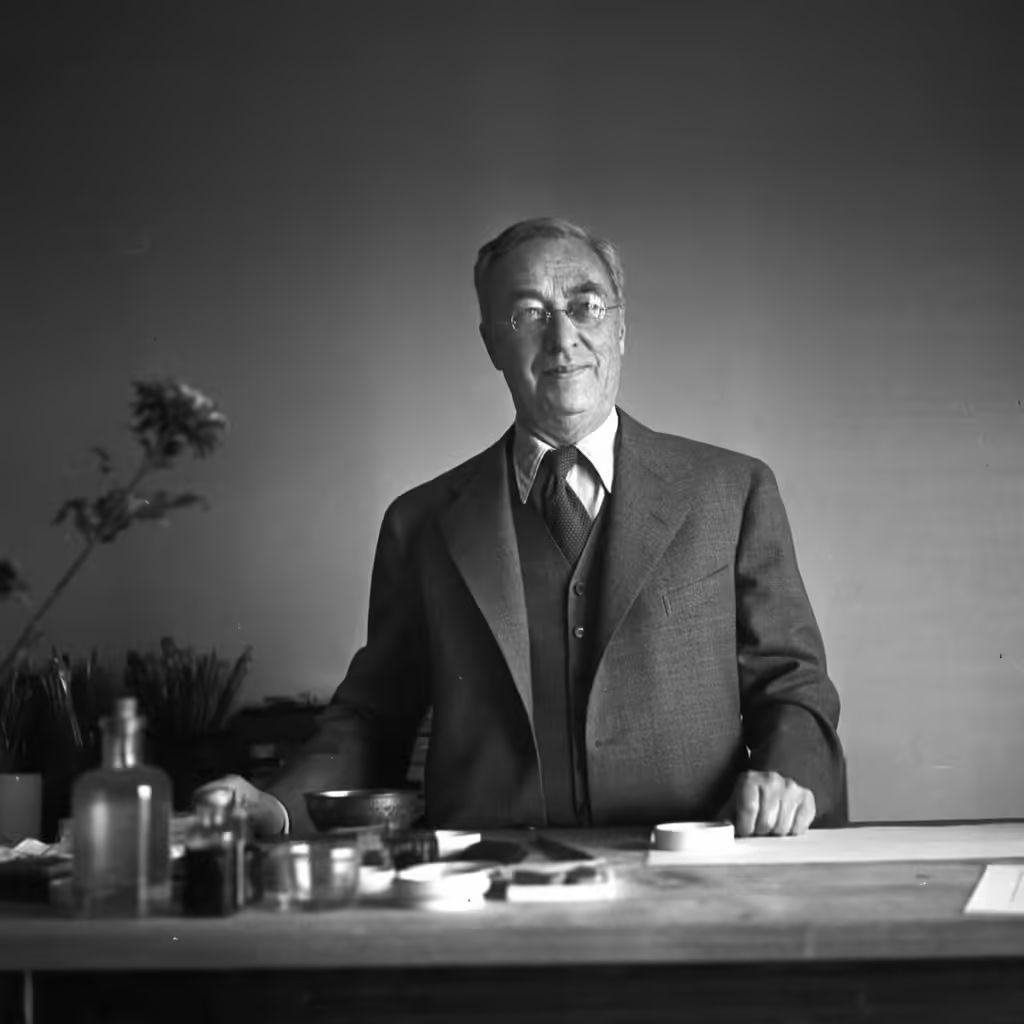
Table of Contents
Who Was Wassily Kandinsky?
Wassily Kandinsky, a pivotal figure in the world of modern art, began his formal study of art at the age of 30 when he moved to Munich to pursue drawing and painting. With a background in music, Kandinsky approached color through a unique lens, akin to a musician’s sensibility. His fascination with Claude Monet led him to explore innovative concepts of color on canvas, which often sparked controversy among his contemporaries. Nonetheless, Kandinsky emerged as a respected leader of the abstract art movement in the early 20th century.
Early Life
Wassily Kandinsky was born on December 4, 1866 (December 16 by the Gregorian calendar) in Moscow, into a musically inclined family. His mother, Lidia Ticheeva, and father, Vasily Silvestrovich Kandinsky, were supportive of his artistic inclinations. Following his parents’ divorce when he was about five years old, Kandinsky moved to Odessa to live with an aunt. There, he developed a passion for music, learning to play the piano and cello, while also receiving drawing instruction.
From a young age, Kandinsky exhibited an innate connection to art, often expressing his belief that “each color lives by its mysterious life.” Despite his artistic talents, he pursued a legal career, graduating with honors from the University of Moscow in 1886. His ethnographic studies took him to the Vologda province, where the local folk art and spiritual traditions reignited his artistic aspirations. In 1892, he married his cousin, Anna Chimyakina, and began teaching law while managing an art-printing business.
A transformative moment came in 1896 when he encountered a French Impressionist exhibition in Moscow, particularly Claude Monet’s Haystacks at Giverny, which marked his first experience with nonrepresentational art. Additionally, hearing Wagner’s Lohengrin at the Bolshoi Theatre inspired him to leave his legal career behind and fully commit to studying art in Munich, a city where he had learned German as a child.
Art and Paintings
Upon arriving in Munich, Kandinsky enrolled in a prestigious private painting school and later the Munich Academy of Arts, though much of his artistic education was self-directed. Initially, he engaged with conventional themes and forms, but he gradually developed theories that intertwined his spiritual explorations with a profound relationship between music and color. By the early 20th century, these theories crystallized, establishing him as a foundational figure in abstract art.
Kandinsky viewed color as an emotional expression rather than a mere representation of nature or subjects. He fostered connections with other artists, including Paul Klee, frequently exhibiting his work, teaching art classes, and publishing his ideas on artistic theory.
In 1903, he met art student Gabriele Münter, with whom he lived until his divorce from Anna was finalized in 1911. The couple traveled extensively, eventually settling in Bavaria before the onset of World War I. During this period, Kandinsky founded the New Artists Association in Munich and, along with fellow artist Franz Marc, established the Blue Rider group. He also became affiliated with the Bauhaus movement, collaborating with Klee and composer Arnold Schoenberg.
The outbreak of World War I forced Kandinsky to return to Russia, where he was influenced by the constructivist movement characterized by geometric forms and hard lines. During this time, he married Nina Andreevskaya, the daughter of a Russian general. They had a son who tragically passed away at the age of three, leading to a silence surrounding the subject of children in their lives. Following the Russian Revolution, Kandinsky remained in Russia, channeling his energies into the administration of educational and government-sponsored art initiatives. He played a crucial role in founding Moscow’s Institute of Artistic Culture and the Museum of Pictorial Culture.
After returning to Germany, where he experienced ideological clashes with other artists, Kandinsky taught at the Bauhaus school in Berlin and engaged in writing plays and poetry. However, the rise of the Nazis in 1933 led to the closure of the Bauhaus. Despite having obtained German citizenship, the conditions of World War II forced him to flee. In July 1937, Kandinsky’s works were prominently featured in the “Degenerate Art Exhibition” in Munich, where 57 of his pieces were confiscated by the Nazis. His legacy, however, remains indelible, marking him as a visionary artist whose contributions shaped the trajectory of modern art.
Death and Legacy
Wassily Kandinsky passed away from cerebrovascular disease in Neuilly-sur-Seine, France, on December 13, 1944. He and his wife, Nina, had relocated to this Paris suburb in the late 1930s, aided by the artist Marcel Duchamp, who helped them find a modest apartment. Following the German invasion of France in 1940, Kandinsky sought refuge in the Pyrenees but eventually returned to Neuilly, where he lived a relatively reclusive life. Despite having gained notable supporters, including Solomon Guggenheim, he experienced a period of depression due to the poor sales of his paintings.
Although much of Kandinsky’s early work from his time in Russia has not survived, a significant number of his German paintings remain. Today, his legacy endures, with recent auction sales of his artwork fetching well over $20 million. Kandinsky believed that each era leaves a unique imprint on artistic expression; his innovative use of color, influenced by musical and spiritual themes, fundamentally transformed the artistic landscape at the dawn of the 20th century and helped usher in the modern age.
